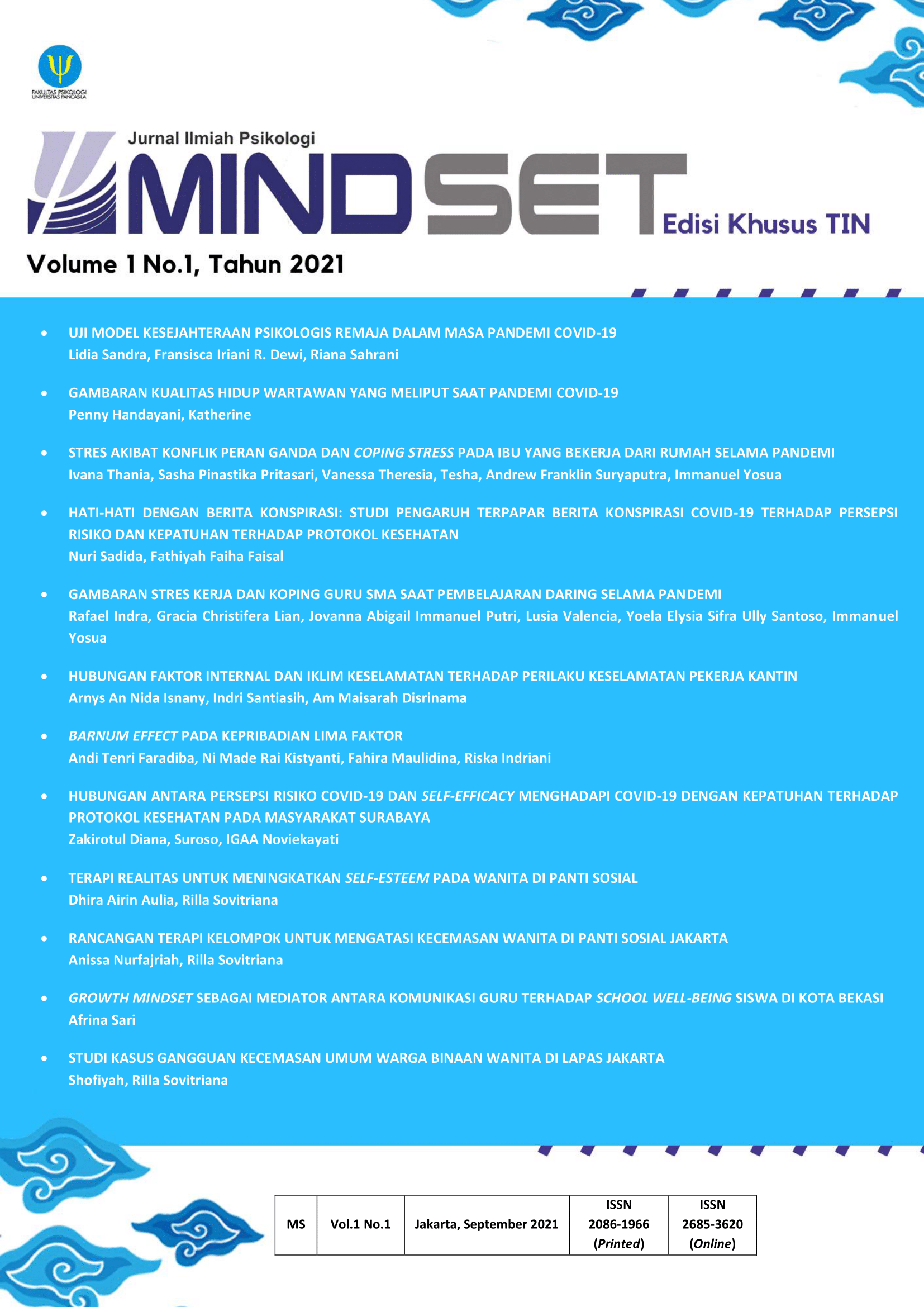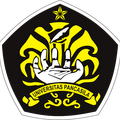Rancangan Terapi Kelompok untuk Mengatasi Kecemasan Wanita di Panti Sosial Jakarta
Abstract views: 643 | PDF (Bahasa Indonesia) downloads: 788
Abstract
The Women's Social Institution is one of the technical implementation units of the Indonesian Ministry of Social Affairs which focuses on the function of social services. the results of field observations that many beneficiaries find it difficult to follow the coaching program if this process cannot be interpreted positively, the individual will experience an anxiety disorder characterized by symptoms and disturbances, difficulty controlling, feeling tense, restless, feeling tired easily, difficulty concentrating, irritability and sleep disorders. The purpose of this study was to determine the clinical picture of anxiety levels in beneficiaries at the Jakarta Women's Social Institution and obtain the results of the application of psychoeducational group therapy to overcome anxiety among beneficiaries at the Jakarta Women's Social Institution. The subjects of this study were five beneficiaries at the Women's Social Institution in Jakarta. This form of therapy is carried out systematically for 10 sessions. This study uses a quasi-experimental design with data analysis techniques using pattern matching and analysis of development results. Measurement of anxiety using the Hamilton Anxiety Rating Scale (HARS) which is given twice in the form of pre-test and post-test. The results of the pre-test showed an average score of 24.8 in the category of moderate anxiety. Based on the application of group therapy with psychoeducational techniques, it shows calmer, more peaceful behavior, more stable emotions, able to concentrate, can sleep, can think rationally. The results of this study can be said that there is a decrease in the levels that are the beginning of light initial lines. This result is supported by the group's average post-test score of 16.8 in the category of mild anxiety.
References
American Psychiatric Association. (2000). Diagnostic and Statistical Manual of Mental Disorders Fourth Edition Text Revision, DSM-IV-TR. Arlington, VA: American Psychiatric Association.
Bauml, J., Frobose, T., Kraemer, S., Rentrop, M., & Pitschel-Walz, G. (2006). Psychoeducation: A Basic Psychotherapeutic Intervention for Patients With Schizophrenia and Their Families. Schizophrenia Bulletin, 32(Supplement 1), S1-S9. doi:10.1093/schbul/sbl017
Bordbar, M., & Faridhosseini, F. (2010). Psychoeducation for bipolar mood disorder. Jurnal: Clinical, Research, Treatment Approaches to Affective Disorders.
Donker, T., Griffiths, K. M., Cuijpers, P., & Christensen, H. (2009). Psychoeducation for depression, anxiety and psychological distress: a meta-analysis. BMC Medicine, 7(1), p.79. https://doi.org/10.1186/1741-7015-7-79
Masita, H. (2018). 10 Terapi Kelompok dalam Psikologi. Tulisan pada 2018.









